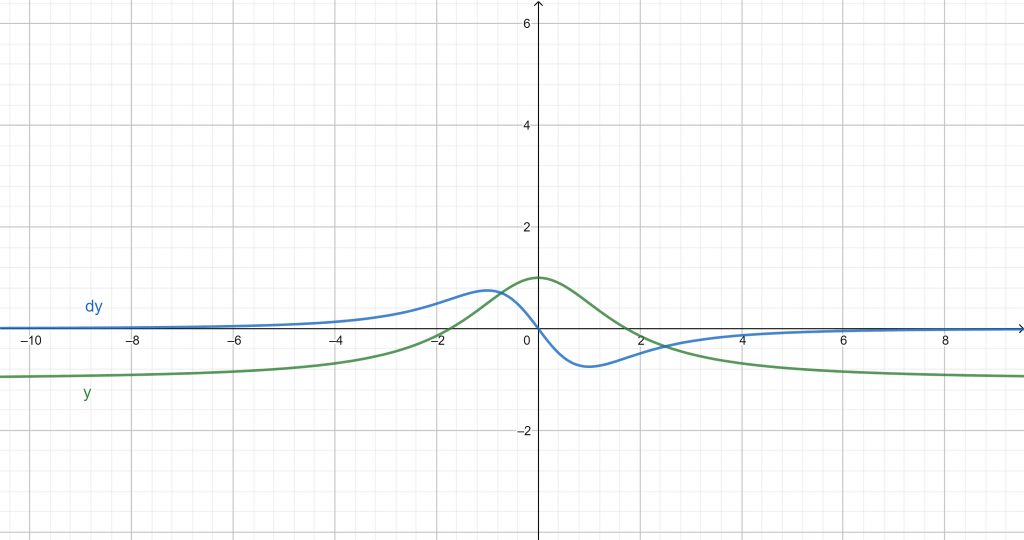The main purpose of this question is to find the differential of each given function.
A function is a fundamental mathematical concept that describes a relationship between a set of inputs and a set of possible outputs, with each input corresponding to one output. The input is an independent variable and the output is referred to as a dependent variable.
Differential calculus and integral calculus are the fundamental classifications of calculus. Differential calculus deals with infinitely small changes in some varying quantity. Let $y=f(x)$ be a function with a dependent variable $y$ and an independent variable $x$. Let $dy$ and $dx$ be the differentials. The differential forms the main part of the change in a function $y = f(x)$ as the independent variable changes. The relation between $dx$ and $dy$ is given by $dy=f'(x)dx$.
More generally, differential calculus is used to investigate the instantaneous rate of change, for instance, velocity, to estimate the value of a small variation in a quantity, and to determine whether a function in a graph is increasing or decreasing.
Expert Answer
(a) The given function is:
$y=\tan(\sqrt{7t})$
or $y=\tan(7t)^{1/2}$
Here, $y$ is dependent and $t$ is an independent variable.
Taking differential of both sides using the chain rule as:
$dy=\sec^2(7t)^{1/2}\cdot\dfrac{1}{2}(7t)^{-1/2}(7)\,dt$
Or $dy=\dfrac{7\sec^2(\sqrt{7t})}{2\sqrt{7t}}\,dt$
(b) The given function is:
$y=\dfrac{3-v^2}{3+v^2}$
Here, $y$ is dependent and $v$ is an independent variable.
Taking differential of both sides using the quotient rule as:
$dy=\dfrac{(3+v^2)\cdot(-2v)-(3-v^2)(2v)}{(3+v^2)^2}\,dv$
$dy=\dfrac{-6v-v^3-6v+2v^3}{(3+v^2)^2}\,dv$
$dy=\dfrac{-12v}{(3+v^2)^2}\,dv$

Graph of $y=\dfrac{3-v^2}{3+v^2}$ and its differential
Examples
Find the differential of the following functions:
(a) $f(y)=y^2-\sec(y)$
Using the power rule on first term and the chain rule on second term as:
$df(y)=[2y-\sec(y)\tan(y)]\,dy$
(b) $y=x^4-9x^2+12x$
Using power rule on all the terms as:
$dy=(4x^3-18x+12)\,dx$
(c) $h(x)=(x-2)(x-x^3)$
Rewrite the function as:
$h(x)=x^2-x^4-2x+2x^3$
$h(x)= -x^4+2x^3+x^2-2x$
Now use the power rule on all the terms as:
$dh(x)=( -4x^3+6x^2+2x-2)\,dx$
(d) $x=\dfrac{3}{\sqrt{t^3}}+\dfrac{1}{4t^4}-\dfrac{1}{t^{11}}$
Rewrite the given function as:
$x=3t^{-3/2}+\dfrac{1}{4}t^{-4}-t^{-11}$
Now use power rule on all the terms as:
$dx=\left(-\dfrac{9}{2}t^{-1/2}-t^{-3}+11t^{-10}\right)\,dt$
$dx=\left(-\dfrac{9}{2\sqrt{t}}-\dfrac{1}{t^3}+\dfrac{11}{t^{10}}\right)\,dt$
(e) $y=\ln(\sin (2x))$
Using the chain rule as:
$dy=\dfrac{1}{\sin(2x)}\cdot\cos(2x)\cdot 2\,dx$
$dy=\dfrac{2\cos(2x)}{\sin(2x)}\,dx$
Or $dy=2\cot(2x)\,dx$
Images/mathematical drawings are created with
GeoGebra.
